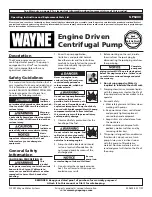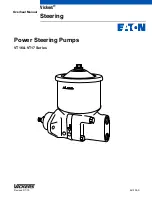
6.4 Operation with flushing gas
NOTICE
Risk of damage from unacceptably high flushing gas pressure!
As the flushing gas quantity increases, the discharge of operating fluid via the pump exhaust increas-
es.
► Observe the max. permissible flushing gas pressure.
► Dose the flushing gas quantity on site.
Continuous operation
After switching off, condensate or penetrating moisture can react with process resi-
dues and damage the pump.
● Operate the pump in continuous operation where possible.
Before shutting down the pump, observe the following instructions to adequately protect the interior of
the pump (pumping system) against corrosion.
Supply pump with flushing gas
1. Switch on the pump and bring it to operating temperature.
2. Open the flushing gas supply and check the flow.
3. Adjust the flushing gas pressure.
– Recommended pressure:
max. 200 hPa (relative)
. This is equivalent to a gas flow of approxi-
mately
2,000 Nl/h
.
4. Open the shut-off valve on the vacuum flange.
Interrupting/stopping the flushing gas supply
To degas the operating fluid effectively, Pfeiffer Vacuum recommends that you shut off the pump on the
intake side following process end, and continue operation for around an hour at ultimate pressure with
the flushing device switched on. The duration depends on the quantity of gas required.
1. Stop the flushing gas supply and shut off the supply line.
2. Switch off the vacuum pump.
3. Vent the pump to atmospheric pressure.
6.5 Refilling operating fluid
WARNING
Danger of poisoning from toxic vapors
Igniting and heating synthetic operating fluid generates toxic vapors. Danger of poisoning if inhaled.
► Observe the application instructions and precautions.
► Do not allow tobacco products to come into contact with the operating fluid.
If the operating fluid has reached the minimum fill level, it must be refilled. The fluid can be refilled dur-
ing operation in the final vacuum.
Operation
34/66
















































